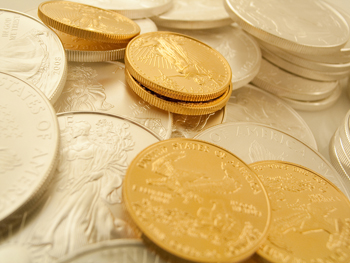 If you are trying to decide if now is the time to invest in precious metals, it is understandable if you are getting confused by the mixed signals that you are receiving. Knowing when to buy can help you maximize the return on your investment. Just like the game of “Simon Says” that you played as a child, it is easy to take a misstep. In the childhood game, if you moved before Simon said to move, you lost the game. As an investor in physical metals, you should only move (buy) when the market conditions are favorable for a rise in precious metal prices.
If you are trying to decide if now is the time to invest in precious metals, it is understandable if you are getting confused by the mixed signals that you are receiving. Knowing when to buy can help you maximize the return on your investment. Just like the game of “Simon Says” that you played as a child, it is easy to take a misstep. In the childhood game, if you moved before Simon said to move, you lost the game. As an investor in physical metals, you should only move (buy) when the market conditions are favorable for a rise in precious metal prices.
Mixed signals are created because there are so many variables that can drive the price of precious metals either up or down. While it is easy enough to find all types of statistics and news about precious metals, there is rarely any strong consensus on how the latest data should be interpreted.
If there is one thing true about the precious metals market, it is that there is no shortage of experts and analysts who are willing to share their opinion about the future direction of gold and silver prices. They all have access to the same data, but they select and shape that data to support their bullish, bearish, or neutral position on precious metals. Objectivity does not always prevail when forecasts are given. Take the example of Peter Schiff, CEO of Euro Pacific Capital.
Schiff is one of the well-known proponents of gold, having jumped on the bandwagon in 2011, when gold reached $1,900 per ounce. At that time, he, and many others were predicting that the precious metal would hit $5,000 per ounce. Today, 3-years later, and with gold having fallen back to around $1,300, Schiff is still saying that gold will hit $5,000. He avoids answering the question of when gold will hit the $5,000 benchmark he has set. Technically, he can still be right, even if it takes ten years to see his prediction come true.
Precious metal price movements can be largely attributed to two distinct forces. Economic forces are the strongest and have the biggest impact on long-term prices. Geopolitical forces can cause major price moves in the short-term, but usually do not play a significant role in long-term price trends.
Economic Forces
What the Federal Reserve does, or plans to do, affects our economy and the price of precious metals. If and when the Fed stops printing money and allows interest rates to rise, one of two things can happen. It might signal that the economy is strong and the stock market will be able to rise further without the Fed’s help. That would be negative for the price of gold and silver. On the other hand, the stock market could go into a serious decline when the easy-money policy is stopped. Equity investors would seek safety in alternative investments, including physical gold and silver. Such a scenario would be positive for precious metal owners.
Geopolitical Forces
Any escalation in the tensions with Isis in Iraq and Syria, Hamas and Israel, Russia and the Ukraine, or a terrorist attack in Western Europe or the United States, could cause precious metal prices to spike. If, by some miracle, these world battles can be settled peacefully, precious metal prices will fall, at least temporarily.
As an investor, it appears that economic conditions that are favorable for precious metal prices slightly outweigh the geopolitical conditions that can hurt precious metal prices. If you are interested in buying gold or silver coins and/or bullion, Simon says to take one small step forward.
